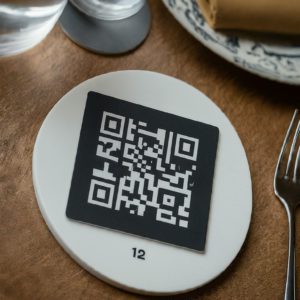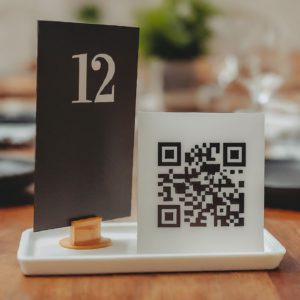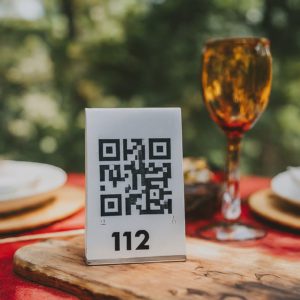How to offer QR code Menus: 20+ Best Practices & Tips for Restaurants – part 2/2
QR Code Menu Best Practices: Background
In our previous article i.e. part 1/2 of this Best Practices while offering QR code Menu series, we deep dived into the where – ‘Where all restaurants and F&B business can leverage QR code ordering’ (i.e. Restaurant QR code Menu Placements Best Practices, along with some insights & innovative marketing tips). These included but were not limited to on-premise / tableside ordering, printed takeaway menus, neighbourhood marketing & co-branding materials (offline & online), ads & hoardings, signages within & just outside restaurants, food takeout & delivery packaging, as well as in online properties such as business profile listings, social media, websites, etc.
In this blog, i.e. part 2/2 of this series, we will look at the how – ‘How to Offer QR code Menu – 20+ Best practices, sprinkled with insights & marketing tips (like the previous one)’. However, this article will not cover (the technicalities of) how to setup QR code ordering system for your food & beverage outlet or restaurant.
If you are a hospitality business in the USA who is looking for a free, flexible & user friendly online and QR code ordering solution (with no hidden costs or upsells), or are exploring how to setup digital menu for your F&B / restaurant business, you can book a no obligation consulting call with TorchFi’s team using the links below.
QR code insight #7 * - QR codes work best when presented (to be scanned) in physical form i.e. printed, or in another device screen. We have explained this below in the latter points.
( * The insights numbering are in continuation from our previous article. Also, for the benefit of those readers who may have not gone through our earlier article, we have briefly repeated a few important points from that in this blog. )
How to Offer QR code Restaurant Menu - Best Practices, Insights & Marketing Tips
The below best practices include those specific to QR code menus as well as general ones for implementing QR codes, that should be observed for QR code ordering as well.
Some Tips and Best Practices specific to On-premise / Tableside QR code Menu ordering –
1) Use Good-quality Laminated plastics for Displaying your Restaurant QR codes:
If you are putting them in sticker formats on the table, they are subject to wear & tear due to customers and severs using the table as well as to the risk of getting wiped off by your cleaners.
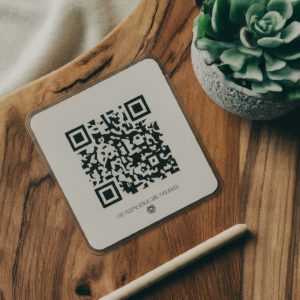
2) Ensure that your Digital Menu QR codes are Easily Accessible:
On your food tables, either as part of the table setup or on a stand, table tent, etc. while at the same time not interfering with your customers’ eating experience.
3) Low-lit Outlets may use Fluorescent QR codes:
If you are a restaurant, bar, pub, live music venue, etc. with low-lit ambience, use a fluorescent or glow-in-the-dark background for QR codes to make them easily visible.
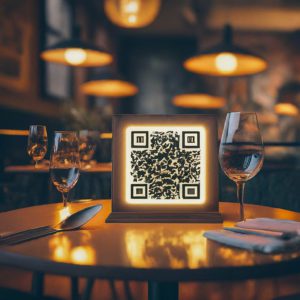
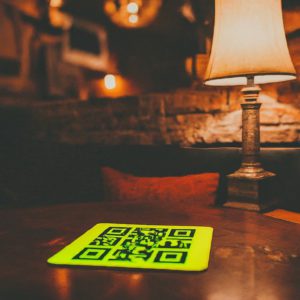
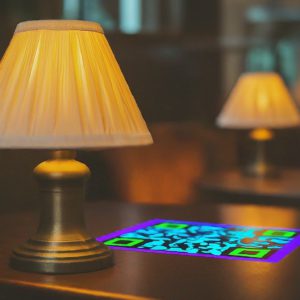
QR code Menu Insight & Tip #8 – If you are just implementing Restaurant QR code menu, train your staff to train customers how to use them, if required, and ensure your staff understands how to manage orders from the new system. Teach and convince your waiters that QR codes based contactless ordering make their work less strenuous and save their time (no more racing between tables with menus & taking orders). Educate them that QR code ordering system is not going to take their jobs away.
4) Include Table-specific QR codes on Printed Menus:
Also, if you are just incorporating QR code based tableside ordering system, include that code (specific to each table) on your printed menus’ cover pages, with clear information that can brief customers of its benefits or special offers. This can be an addon to your table kept QR codes as it is quite possible that they (table QR codes) may get misplaced during cleaning, etc.
5) Indicate the Table numbers besides your Restaurant QR codes:
And for the same reason and since all QR codes look the same, if you have multiple tables with dedicated QR codes for each, clearly demarcate the QR codes on their backside or on their top / bottom with the table numbers (for your internal as well as customers’ reference). You may similarly include the table numbers besides the QR codes stuck or printed in your physical on-premise menus.
Did you know that QR code menu ordering extends beyond the typical fast casual / QSR or fine dine restaurants formats’ tableside ordering? For e.g. we at TorchFi have helped F&B and recreational outlets of various types such as RV resorts, hotel rooms, golf courses, bowling alleys, sports arcades and more set up multiple QR codes food ordering mapped to their desired ordering stations. For details see https://www.torchfi.com/#multichannelordering
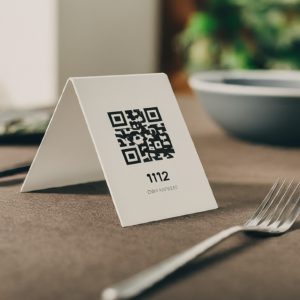
Marketing Tip: Promote to your customers about your new QR code menu ordering option and special benefits / offers therein also through in-store signage (regular or digital) and through digital marketing (emails, text messages, social media posts, etc. to your existing patrons, lists and followers).
6) Ensure good Internet Connectivity at your Restaurant:
No or low speed internet means users may not be able to open, upon scanning your QR code, the food ordering / digital menu URL you’ve set up. If your restaurant has no adequate network coverage, offer your guests free Wi-Fi. This will be also useful for international tourists with no data roaming, who may be visiting your restaurant.
7) Make the QR code Menu-based Interaction & Transaction as Easy as possible for your Customers:
Don’t make or expect them download an app first or change some settings in their phone, etc. to view your menu or to do any other action using your QR code. These can turn them off from using your QR codes.
8) Don’t just Upload a pdf of your Restaurant Menu:
Also, it is a bad practice for restaurants to just upload a pdf version of their physical menu that will open up when the customer scans their QR code. In this case you are expecting the customer to download / go through a online document that is static, which may or may not have good readability and they have to ultimately call your waiters for food ordering & payment.
TorchFi can help you setup a QR code menu ordering system without the need for your end customers to download any app to view it or without even the need for you to have your own website. Also, we help you build powerful e-commerce-enabled online menus with food ordering, than just uploading a pdf version of your menu.
Marketing Tips: Here are some additional ways in which restaurants in the USA can leverage QR code menu, beyond having common ones for table-side ordering, printed menus & online materials, which will help them provide Enhanced Customer Experience:
- Dietary Considerations: Create a unique ordering page and QR code linking to a separate menu for gluten-free, vegan or other dietary restrictions.
- Interactive Specials: Offer a QR code leading to a page with day-specific or happy hour specials that can be updated easily.
- Third-party Delivery App Integration: For restaurants which don’t have their own ordering page but instead depend on food delivery platforms, QR code(s) can link customers to the restaurant’s profile(s) on the delivery apps for online ordering.
Did you know that with TorchFi’s free online ordering solution, you (restaurants) can create & offer your own online & QR code food ordering services to your customers without being dependent on 3rd party apps and without even the need to have your own website? This helps you & your customers save on commission fees. Moreover, our integration with DoorDash and Uber Eats lets you fulfil those orders at minimal cost. You can also create customized ordering pages for your specials or happy hours as mentioned above, which can be enabled, disabled & updated at the click of a button.
9) Information telling Users what happens if they scan the QR code should be Clear & Prominent like the Code itself:
Indicate what the QR code does i.e. where it will lead to. Unlike links or raw URLs that contain destination information, QR codes show no details by themselves. Provide the necessary information alongside the QR codes to make them trustworthy & enticing so as to convince the user to scan them. These can include additional contextual information such as short URL / domain name (e.g. yourrestaurantname.com without including www or https) indicating where the code leads to on scanning, a text and call to action button such as Scan to Order Now (instead of just scan me or learn more).
Main Considerations:
- Clear Call to Action & Text: Ensure QR codes have a clear and concise message next to them, explaining what the code links to and why customers should scan it.
- Design Matters: Ensure the QR code is visually appealing and easy to scan. Consider incorporating your restaurant’s branding or color schemes while not interfering with its scannability.
- Offline Accessibility: Provide a backup plan for customers who don’t have smartphones or prefer a physical menu.
10) Don’t make QR code the only Option to Access your Online Menu:
QR code Ordering Insight #9: Offer QR codes as an optional convenience. Ideally you should also include the full web address, that allows your customers tableside ordering with or without the code. Because not everyone is comfortable with using QR codes or knows how they work. Some people’s phones may be old or their cameras could be faulty. Others may prefer to use their laptop or tablets to scan. If you don’t provide a backup option, they are stuck.
Now let us look at some General Best Practices when implementing QR codes for your Business. Needless to say, these are applicable for QR code Menus too:
11) Design QR codes in Black & White:
For easy scannability, keep the QR codes in Black and White color or use very high-contrast color pairs. Avoid glossy shiny prints. While it is fashionable & fancy to have your color schemes inside QR codes, not all phones will be able to scan them. Do not use more than one foreground colour. Where maximum scannability is crucial, stick to the classic Black on White. The background colour must extend fully around the code to create a margin. Clear space around the code is as important as the code clarity itself.
12) Do not Invert QR code Colors:
They should be in light mode with a dark foreground and a light background. Most cameras on latest phones & tablets can scan QR codes with inverted colors, but not all phones or scanning technology used in physical locations can necessarily successfully do that in a given instance. However, you can leave enough clear margins & space around the QR code and decorate its surrounding areas with the colors you want.
Marketing Tip: For e.g. while TorchFi helps you build a branded free digital menu & food ordering page as per your brand colors & themes, let your user experience begin a step before. For e.g. if you are a DC comics or Disney themed restaurant, then you can design your QR code surroundings accordingly.



( The above are representative images of movie character themed QR codes. Among these, the middle one is more ideal from a functional point of view, because it has no characters inside the QR codes unlike the other two. We have explained this in point 14 below. )
13) Keep QR codes Square:
QR codes should be square, with square pixels. Other shapes, like circles or those adapted to your brand elements’ shape may not always work. In such cases, the square QR code is still there at the centre of the figure, but its bits are added or cut off to achieve a different form. This can drastically affect the scannability of the code. You can make minor adjustments to the style of the code, for example, slightly rounding the corner markers or pixels within the code, for a friendlier look; but avoid making them too circular or other shapes.
14) Don’t include Graphics inside the QR code:
Such as images, logos, your brand design elements, etc. Resist the temptation to make your QR codes look more attractive by overlaying or including these inside them. These make the code harder to scan.
15) QR codes should lead to Mobile Friendly pages:
With quick loading time and good UI / UX. Provide interactive menus with good resolution photos, detailed descriptions, addon options, allergen / nutritional information, etc. This one is applicable to QR code menu for both tableside & online ordering.
16) Have secure Links open from your QR code:
Have an https secured (green padlock, but may vary browser to browser) website / page of the link that opens from the QR code. This site should not give any threat warning to the users, which will discourage them from taking the desired action at the page or from even visiting or staying on the page.
TorchFi’s QR code & online ordering solution helps create a safe, secured and privacy-enabled transaction environment for both restaurants and its end customers.
17) Provide Authenticity to your QR code Users:
Provide trust to convince users the QR code will lead to your authentic online ordering site where their data will be safe and not lead to phishing sites. This can be by following your brand guidelines i.e. placing your brand name and / or elements such as logo, brand colors / theme, messaging, etc. near the QR code (but without interfering with its scannable area).
QR code Insight & Marketing Tip #10: Even big trusted brands are subject to imposter QR codes / links pretending to be theirs. Customers are getting increasingly educated of this and are wary of this considering the rise in cyber crimes. So, if you are a relatively newer-brand restaurant, go ahead and include your secure site symbols that you may be using in your website (through your SSL provider), besides your QR code too.
18) Beware of and Protect your Customers from Fake QR codes:
Similar to what we touched upon in above point, malicious QR codes can be tactically placed by hackers, etc. over legitimate ones in public places such as restaurants, parking meters or transportation hubs, or even as posing as your own brand’s QR code in offline / online format, thus opening the door to all sorts of harmful actions. So, stick your QR codes from inside the window than sticking outside it at your restaurant.
Also sample cross check your QR codes that you publish in print, indoor & outdoor signage format and online, once it a while to ensure they are leading to the correct URLs. Use online monitoring and social listening tools to identify your imposters.
19) Deep-Link QR codes directly to Relevant pages or Actions:
Users prefer QR codes to take them to a link / screen directly related to the context of the code rather than to a generic homepage. It can be irritating for them to land up on the website’s homepage and be lost not knowing where to navigate next to complete the transaction. If you are providing special discounts or promotions / loyalty programs or their enrolments, let the QR code deep link to that specific page or campaign.
QR code Insight: QR codes are most effective and easy to be scanned when they are in print or in another (device’s) screen as against (customers) seeing one inside their phone screen, in which case they may have to save the QR code image or take a screenshot, then long press in the photos app / or open their camera, then its lens mode, open the image from gallery, etc. before finally being able to scan it. (This step can vary device to device, software, apps, etc. but many users will not know that.) While technology will certainly advance to make this easier, not everyone will be well versed with this.
20) Hence share Direct Links instead of just QR codes when Displaying them for making your Users access Information on the same Mobile Device:
Sharing a QR code to your users’ mobile device works best when it is intended to be presented by them to someone else or a scanner at a physical location. E.g. digital boarding passes, e-tickets, auto check-ins. However, if the information is intended to be accessed on the same mobile device displaying it, it will be more easily accessed through a direct link than through a QR code because a user won’t be able to easily scan a QR code displayed on their own device. Therefore, in most cases, sharing a direct link along with the QR code is better than just sharing a QR code online.
21) Ensure that QR codes lead to Up-To-Date Information:
Users who scan a QR code even in the future should still see relevant information. Once a QR code is made public (especially in physical / print distributed form), it cannot be taken back. Even if the code is applicable only for current temporary information, such as an ongoing (ad) campaign, sale or special menu page, some users might still scan it after the related information becomes irrelevant. Old codes should redirect to a relevant page that explains that the window has passed (or the offer is over) but provides easy access to current information related to the original purpose of the code.
Marketing Tip: The above can be a good opportunity to funnel in your users to your new landing page(s), upsell new offerings, inform them of ongoing discounts & offers, etc.
22) Use a Short, Memorable QR code Menu URL rather than just a QR code if Users have less than 15 Seconds to Scan It:
QR codes are not well-suited to roadside billboards / signages (that you may put even on your restaurant windows) that are passed by very quickly or in rotating carousels (such as digital signages on large screens) that show them only for a few seconds at a time. For quick-exposure scenarios, a short, meaningful, memorable URL will perform better because users can retain it in their memory while deciding to visit the site. Although people rarely memorize URLs, they are still more memorable than QR codes.
As a standard, QR codes are ideal when your audience has at least a minute to engage with the design. (There’s no point showing a QR code on highways or besides an escalator.)
Relying solely on QR codes for accessing a site means that most users will not be able to revisit the site without the code. Many people will have trouble even looking through their browsing history to access previously visited links — especially on mobile. However, QR codes certainly catch attention and inform your target audience about your QR code menu facility.
23) Make Sure QR codes Are Big Enough for Better Scannability:
Users must be close enough to QR codes to successfully scan them. While many phone cameras offer zooming capabilities, proximity and angle is still crucial. While the official minimum recommended size for a QR code is 1 cm x 1 cm, this can be too small for reliable scanning. Go for a minimum size of 2 cm x 2 cm (0.8 inches x 0.8 inches) for better results. The farther you expect users to be while scanning the code, the bigger your codes should be. As a thumb rule, for every 10 cm of distance from the code, add an extra 1 cm to its length & breadth.
For example, if you expect users to scan from around 50 cm away, then the code should be at minimum 5 cm x 5 cm in size. It is especially important to have bigger QR codes when they are to be used in low-light environments to increase their visibility and scannability.
Different QR codes contain different number of pixels (based on the final URL’s length). So more the pixels, the larger the code needs to be. The above-mentioned size examples assume a code with 29 × 29 pixels.
QR code Insight & Tip #11: Even if you’ve tested a smaller QR code with your own smartphone and it worked, your customers’ devices may not have cameras or internet as good as yours.
24) Shorter URL links mean better QR codes:
If you can shorten the URL you want people to visit, you’ll get a more scannable code.
Want a QR code ordering service provider who ticks all the above boxes, so you can concentrate on your core competence which is amazing customer dining experience? Leave the hassle to TorchFi. Our restaurant partners find our QR code ordering system intuitive. And our end users love the interface & experience that they order more food and keep visiting again. If you would like to try TorchFi, just reach out to us using below options:
How to Offer QR Code Menu - Best Practices' Summary & Conclusion
We looked at some QR code menu-specific best practices followed by general best practices for QR code implementation. These included but were not limited to:
- Using good quality materials to display the QR codes to avoid wear and tear
- Keeping the QR codes easily accessible on food tables while not making them interfere with customers’ dining experience
- Demarcating the QR codes clearly with their respective table numbers
- Ensure good mobile network / internet availability for your customers
- Making the QR code-based interaction & transaction as easy as possible for your customers
- Including basic important essentials such as end URL info, text and call-to-action messages alongside the QR codes
- Having a backup URL option / plan for customers who are unable or don’t know how to scan QR codes
- Using the right colors, size and shapes when designing your QR codes as well as things to avoid using in the QR code design
- Considering certain UI / UX, security and relevancy factors in the URLs that open upon scanning the QR codes, as well as in the QR codes themselves
While we have made efforts to make this article as exhaustive as possible, readers are advised to use these selectively as per their discretion & need and also refer other materials / seek professional advice if required.
Note: We have separately covered in detail about ‘10+ Best practices & Tips on Where to offer QR code Menu (Placements)’ in another article i.e. part 1/2 of this series at this link. Going ahead, we will be also publishing blogs on Best Practices for implementing Online and / or QR code Ordering specific to F&B formats and categories such as Quick service / Fine dine Restaurants, Golf courses, Bowling alleys, RV resorts, Hotel rooms, Sports arcades, Breweries, Food halls and more. Follow us on LinkedIn to get notified when we publish each of these articles.
These best practices can help restaurants effectively implement and leverage their QR code menu, enhance customer interaction & experience and boost their online presence and revenue. By following these tips covered in both our articles, US restaurants can efficiently engage with customers both online and offline, thus promoting their brand & business in a convenient and innovative way.

